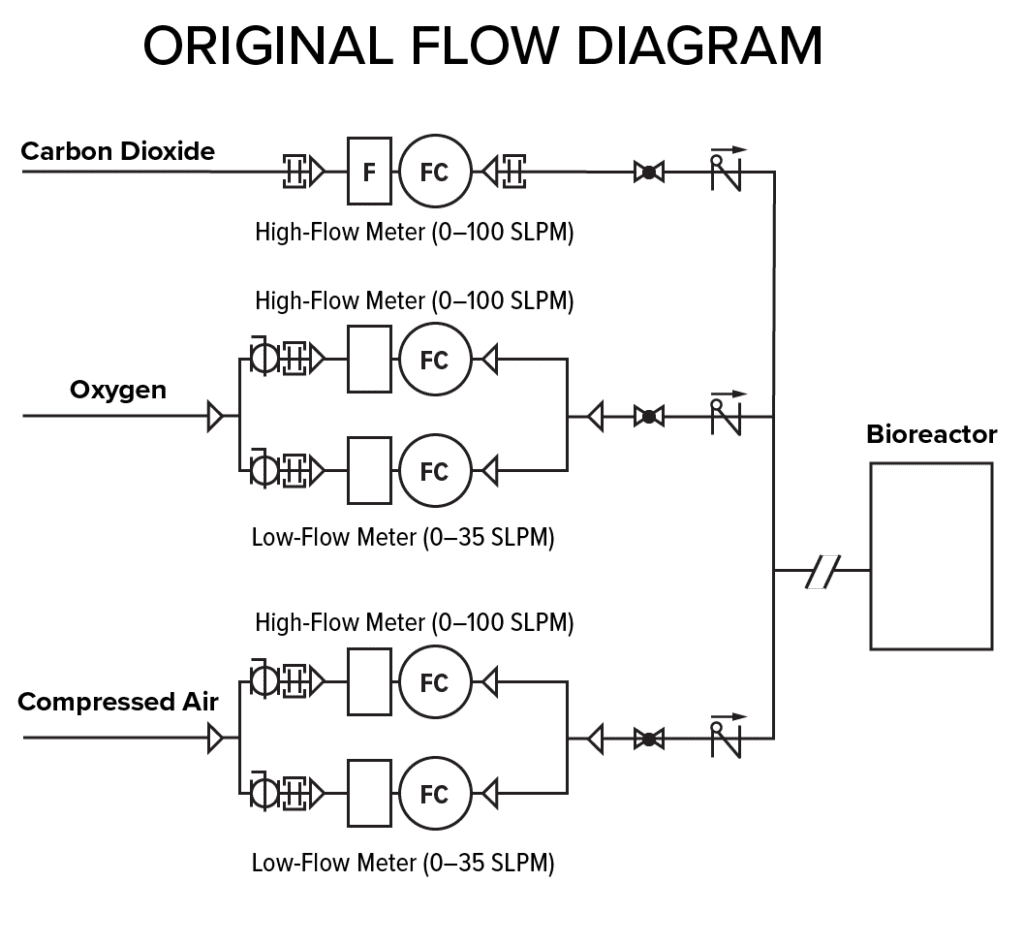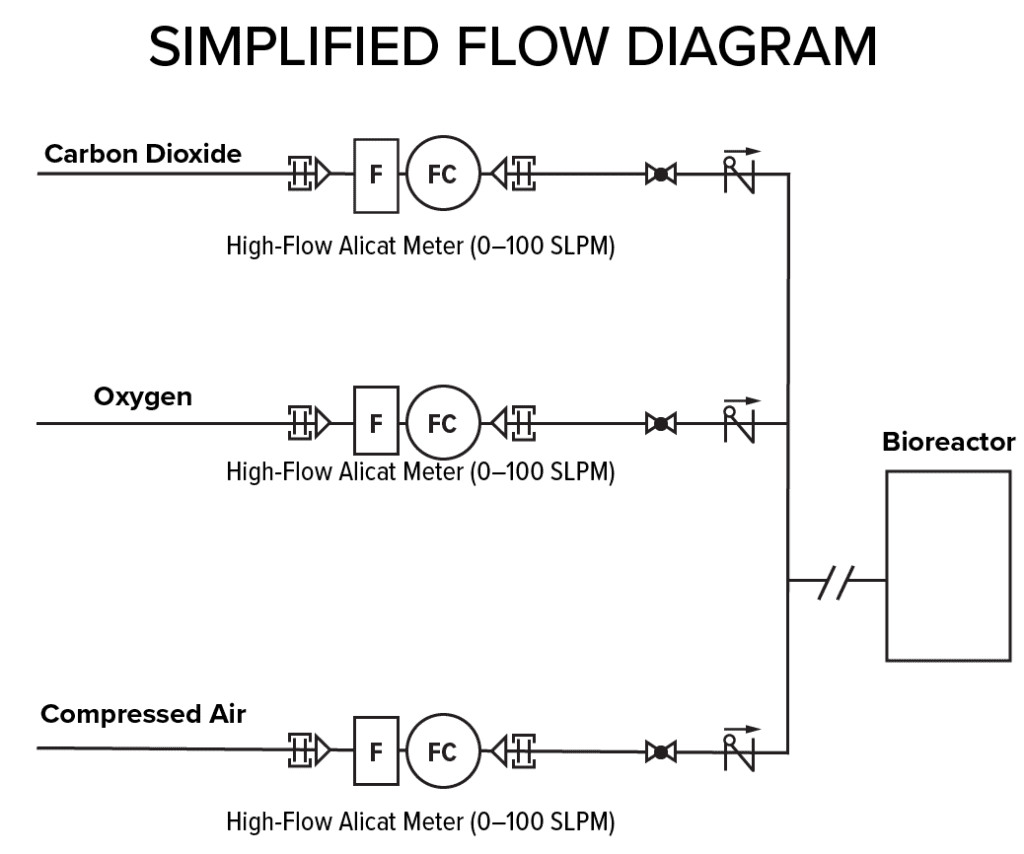- Blog
- Using fewer flow controllers for increased redundancy in bioreactor systems
Using fewer flow controllers for increased redundancy in bioreactor systems
When uptime is crucial, redundancy can be built into systems to increase reliability and availability. Redundancy in bioreactor systems means more uninterrupted hours dedicated to development and production of biologics; and when issues inevitably appear, redundant systems are able to compensate with minimal disruption to the process and without risking system integrity or compliance.
Often, building redundancies into a system increases the overall system cost. But in bioreactor systems, incorporating redundant mass flow equipment can actually lower system costs for both benchtop systems and pilot- and production-scale setups.
Redundancy increases flexibility for benchtop research
Benchtop research is inherently much more price sensitive than large-scale production, as pharmaceutical companies are cautious with biologics that have not yet been qualified, tested, and approved for mass use. Small-scale setups are therefore often limited by budget and space, so flexible equipment that can serve multiple purposes is highly beneficial for research purposes.
Consider a benchtop bioreactor that alternately flows oxygen and air, with the potential to also flow carbon dioxide and nitrogen. A traditional setup requires at least four mass flow controllers: one for each gas, and additional controllers if the flow rates are highly variable.
Imagine instead a single, flexible mass flow controller that can switch between flows of any of the gases, individually or in combination, without the need for recalibration. If this device also operates across a large range of flow rates (high turndown ratio), it alone can provide the precise flows needed for controlled culture growth.
Flexible flow controllers are also highly beneficial in lab setups with multiple reactors working simultaneously, perhaps each growing a separate cell line to test. Traditional setups require a large number of flow controllers – at least one for each gas flowing into each reactor. Meanwhile, flexible mass flow controllers can be switched between reactors to flow gases as necessary.
Using flexible controllers can provide invaluable benefits in terms of both money and space. In this case, the benefits include up to 4x cost savings on mass flow equipment, and more valuable bench space due to the significantly smaller bioreactor footprint.
Redundancy allows consolidation at pilot- and production-scale
In larger-scale systems, flexible flow controllers can allow system designers to minimize the number of flow lines while greatly reducing the necessary spares inventory. This makes the system both easier to set up and more serviceable, decreasing the potential for errors and increasing the available uptime of the system.
This is achieved by using mass flow controllers with high turndown ratios. Traditionally, separate flow controllers would be necessary to control the low and high flows required for various stages of metabolic growth. In contrast, a single mass flow controller with a large operating range can control both low and high flows.

Original flow paths required separate meters for low and high flows.

Simplified flow path used flexible flow meters with high turndown ratios to use a single flow meter for a wider range of flows.
Fewer devices also means fewer potential points of failure. And when servicing is required, or when there is a failure, a spare mass flow controller can be insert anywhere in the system, without requiring reconfiguration. Redundancy in bioreactor controllers therefore creates versatility created through the combination of high turndown and the capability to flow multiple gases without the need for recalibration – and serves to maximize system uptime at the lowest possible cost.